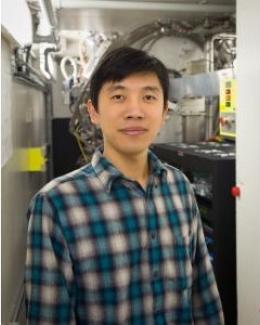Abstract
Intermetallic metal hydrides are critical materials for hydrogen storage applications, however, metal hydrides with greater storage capacities are still needed. Within metal hydrides, the volumetric storage capacities are limited by the number of hydrogen-accommodating interstitial sites which can be simultaneously occupied given a minimum hydride nearest-neighbor distance of ≈ 2.1 Å, according to the Switendick-Westlake criterion. To date, violations of this criterion are rare. Perhaps the most well studied compounds violating this criterion are the RNiInHx compounds (R = Ce, La, Nd). Previous neutron diffraction studies on the deuterated species revealed the presence of Ni–D∙∙∙D–Ni–D∙∙∙D–Ni chains with anomalously close D∙∙∙D contacts of ≈ 1.6 Å. Yet there are no neutron vibrational spectroscopic investigations reported for these atypical hydrides. Here we use neutron vibrational spectroscopy (NVS) measurements to probe the hydrogen dynamics in LaNiInHx (x = 0.67, 1.6) and CeNiInH1.4. For x > 0.67, the presence of close H∙∙∙H contacts yields two related features in the vibrational spectrum centered near ≈ 90 meV corresponding to the oscillations of paired H atoms simultaneously occupying neighboring R3Ni tetrahedra. Notably, these features are energetically distinct from comparable vibrational motions for “unpaired” H atoms when x ≤ 0.67. To compare, we also present powder neutron diffraction and NVS measurements for the newly characterized, chemically similar Sn compounds CeNiSnH, CeNiSnH2, and CeNiSnD2. These compounds also contain R3Ni tetrahedra, however, the H-occupied tetrahedra are well separated from each other with the closest H∙∙∙H distances exceeding 2.1 Å, and the Switendick-Westlake criterion is not violated. Consequently, the spectral signature of the close H∙∙∙H contacts is absent in these hydrides.



